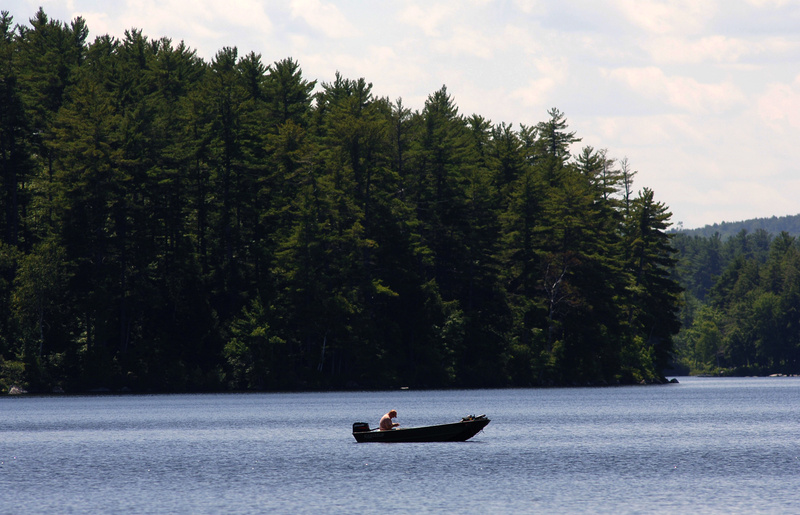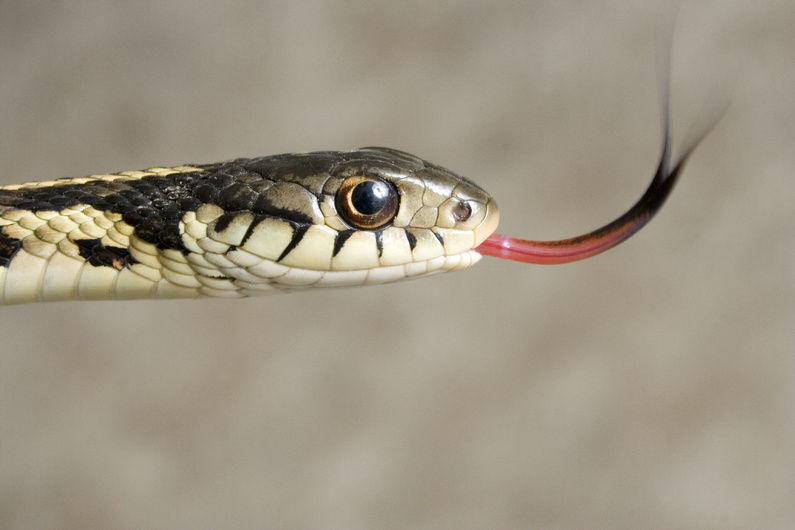My newspaper columns wind up on the Internet, where they hang around for years, attracting readers from across the nation.
Often enough, these folks write e-mails about long forgotten articles, leaving me scratching my head, trying to remember having written them.
One subject that captures big-time interest involves creepy snake stories. Folks just love being frightened by such tales, and often readers send me an e-mail, wanting to know how to avoid similar experiences.
Snake-story fans mention the following two anecdotes the most, and one e-mail started something like this: “I just read your story about the northern water snake trying to get on your head while you were wading for bass at night. My husband takes me wade-fishing for bass after dark, too. What can I do so this will never happen to me?”
The woman was referring to an incident that occurred on Long Pond in the downtown Belgrade Lakes village eight years ago. Shortly after the incident, the story appeared in this column. It’s one I shall never forget.
That night, as twilight leaned toward darkness, my intrepid companion, Jolie, and I were wading in waist-deep water, waiting for smallmouth bass to start rising.
Our eyes continued adjusting to the failing, diffused light, so we could see surface objects — just not that well. About 25 feet away, a head poking above the water caught my eye, but I couldn’t tell if it was a snake or turtle.
A minute or so later, a northern water snake — large by Maine standards — burst through the surface film right next to me and started slithering up my right arm.
In a near panic, I knocked the nasty little serpent off and in front of Jolie, ran toward the nearest dock like a frightened rabbit. She claimed that near the end of my flight, it looked as if I were walking on water.
I am not really afraid of snakes but do not want one on top of my head where it might bite my nose or ear.
Dennis McNeish, a retired fisheries biologist from the Department of Inland Fisheries and Wildlife, once told me that this snake species had bitten him more than once, a surprisingly painful nip.
This water snake also leaves an anti-coagulant with the bite that helps subdue tiny critters by making them bleed a lot.
With 20-20 hindsight, the explanation for the snake’s strange behavior struck me as pig simple. It thought I was a rock or stump and wanted to coil on top while waiting for a meal.
Here’s another little tidbit about snakes, which leads to another story:
Maine has no poisonous snakes. These non-viper species have no fangs but do grow several rows of small teeth that curve back, an evolutionary development that keeps critters such as frogs and mice from escaping once a snake has caught one in its mouth.
Such teeth remind me of a childhood story about my cousin, Britt “Bud” Norton Jr. of Wayne, another favorite anecdote of my readers, according to e-mail responses.
When Bud was 12 and I was 10, his mother asked him to remove a garter snake from a cellar window well so it wouldn’t get into the house. (Many folks don’t realize this, but according to an IFW booklet, garter snakes rank as the second-largest snake in the state, next to the ultra-rare black racer. This wasn’t a record garter but big enough.)
Bud marched up to the wide, narrow window well, looked down at the snake coiled against a corner, facing us, and stuck his hand toward the gaping mouth.
“Watch out,” I warned. “He’ll bite you for sure.”
I had played with snakes enough to know that nonpoisonous ones do bite, but he just looked back and said, “You blankety-blank fool, snakes in Maine don’t bite!”
A split-second later, the trapped, threatened garter snake grabbed Bud in the meaty flap of skin between his thumb and index finger and held on like a junkyard dog. Bud was desperately trying to shake it off, but those folding teeth worked well for several long seconds.
The late Edmund Ware Smith, one of Maine’s most successful outdoor writers, once wrote a true story called “Death of a Haunted Tent.” It involved a snake anecdote that ranks as the mother of them all.
Smith and a guide were camping in West Virginia, using Smith’s tent that had a hole in it. In the middle of the night, the guide woke Smith quietly and told him that a rattlesnake had come into the tent.
The night was black so Smith asked how the guide had arrived at such a conclusion, and the answer made Smith sweat plenty.
As the two men had slept, a timber rattler had crawled through the hole in the canvas and had then wiggled across their feet, waking the guide.
Also, rattlesnakes smell like cucumbers, according to the guide, and Smith could smell that distinct odor as soon as the guide mentioned it.
I read the story 39 years ago and don’t remember the ending, but it was a scary enough tale so the horror of lying in a dark tent with a rattler has stuck with me all these years.
And even now, I make sure the zippers are tightly closed on my tents and might even take a plastic, bread-bag tie to fasten the sliding tabs.
Ken Allen of Belgrade Lakes is a writer, editor and photographer. He can be contacted at:
kallyn800@yahoo.com
Copy the Story Link
Send questions/comments to the editors.




Success. Please wait for the page to reload. If the page does not reload within 5 seconds, please refresh the page.
Enter your email and password to access comments.
Hi, to comment on stories you must . This profile is in addition to your subscription and website login.
Already have a commenting profile? .
Invalid username/password.
Please check your email to confirm and complete your registration.
Only subscribers are eligible to post comments. Please subscribe or login first for digital access. Here’s why.
Use the form below to reset your password. When you've submitted your account email, we will send an email with a reset code.